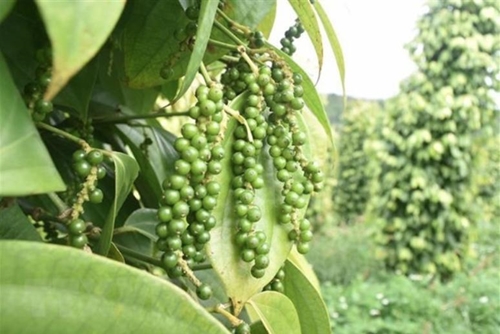According to the Vietnam Pepper and Spice Association (VPSA), as of mid-May, the country had exported 84,844 tons of various types of pepper, generating revenues of 585.2 million USD. Although the volume declined by approximately 10% year-on-year, the value surged by 45%, driven by a significant increase in export prices. During the four-month period, the average export price for black pepper reached 6,749 USD per ton, an increase of 96%. Meanwhile, white pepper was priced at 8,611 USD per ton, reflecting a rise of 73.8%.
    |
 |
|
As of mid-May, the country exported 84,844 tons of various types of pepper, generating revenues of 585.2 million USD. |
The Ministry of Industry and Trade’s Agency of Foreign Trade attributed the rising prices not only to reduced supply but also to positive signals from major markets such as the Middle East and Europe. Vietnamese exporters are increasingly diversifying their market reach rather than relying solely on a few traditional partners.
The U.S. remained Vietnam’s largest destination, accounting for 22.5% of total exports, despite a sharp 26.7% drop in volume. India followed with an 8% share, trailed by the UAE and Germany, both holding 6.7%. Exports to China saw a dramatic rise of 94.4%, now representing 4.5% of the total share. Other markets such as Hong Kong (China), Australia, and Poland also recorded significant growth, whereas declines were noted in the Netherlands, Russia, the U.K., Egypt, Turkey, and France.
On the import side, Vietnam spent 108.6 million USD to purchase 18,388 tons of pepper, primarily from Brazil, Indonesia, and Cambodia, with the value more than doubling compared to the same period last year. Experts viewed this import activity, intended for reprocessing and re-export, as a routine strategy to sustain Vietnam’s dominant position in global pepper exports. The country currently accounts for around 60% of the world’s pepper market share.
However, a key bottleneck currently facing the Vietnamese industry is its continued reliance on exporting primarily raw pepper, with little emphasis on branding.
Hoang Phuoc Binh, former Vice President of the Chu Se Pepper Association in the Central Highlands province of Gia Lai, noted that despite exporting in large volumes, Vietnamese pepper has yet to establish a significant presence in terms of brand recognition on the international market.
VPSA Chairwoman Hoang Thi Lien added that exporters targeting high-standard markets that impose strict quality requirements but offer attractive profit margins must pay greater attention to quality control for enhancing product consistency and resilience in the face of market fluctuations.
Source: VNA